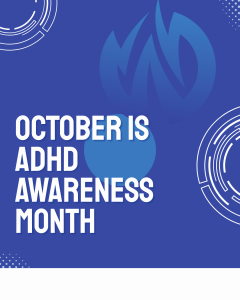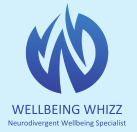October is ADHD Awareness Month, which makes it a great time to talk openly about what ADHD really means. ADHD is one of those conditions that people often think they understand – usually because of stereotypes or throwaway comments like “I’m a bit ADHD today.” But the truth is far more complex, and far more human.
As someone who is both professionally supporting ADHD in my work and has a diagnosis myself, I want to clear up some of the biggest misunderstandings. My perspective comes from research, practice, and lived experience – the things I’ve read, the people I’ve supported, and the reality of living in an ADHD brain every single day.
ADHD is a neurodevelopmental condition.
It affects how the brain regulates attention, focus, energy, and emotions. ADHD shows up in three main ways: inattentive, hyperactive/impulsive, or combined. It isn’t just about being “distracted” or “fidgety” — it’s about how the brain processes and prioritises information differently.
ADHD isn’t laziness or a lack of willpower.
I’ve lost count of how many times either I’ve been told – or have had others tell me the they were told – to “just try harder.” But effort isn’t the issue. ADHD brains can hyperfocus on something they love for hours, yet struggle with simple everyday tasks like answering emails or making dinner. It’s not about effort, it’s about brain wiring.
ADHD is lifelong.
ADHD doesn’t “go away” when you grow up. For me, a later-life diagnosis helped to explain decades of feeling “too much” or “not enough.” The symptoms can change over time — less visible hyperactivity, more hidden struggles with organisation, time management, and emotional regulation.
ADHD isn’t bad parenting.
Parenting styles don’t cause ADHD. However, how a child is supported at home and at school makes a huge difference. A child seen as “naughty” may actually be overwhelmed, overstimulated, or struggling with executive function. Supportive environments help them thrive.
ADHD is linked with unique strengths.
It’s not all challenges. Many people with ADHD (myself included) are creative, intuitive, resilient, and excellent problem-solvers. Hyperfocus can drive deep learning and innovation. The flip side of impulsivity is spontaneity and courage. The goal isn’t to “fix” ADHD, but to understand and work with it.
ADHD isn’t the same for everyone.
It doesn’t look the same in every person. Some people are restless and talkative; others are quiet but lose themselves in thought. Women and girls often internalise ADHD — masking struggles until burnout or mental health issues bring them to light.
Why Awareness Matters
ADHD is still misunderstood, and those stereotypes are harmful. A teenager who’s constantly told they’re “lazy” may grow into an adult battling shame and self-doubt. A colleague labelled as “disorganised” may be masking huge effort just to keep pace. I know from personal experience how easily ADHD traits can be misinterpreted – and how different life feels when you finally have understanding and support.
Awareness helps us move past blame and stigma. It helps workplaces put the right supports in place, schools adapt expectations, and families feel compassion rather than frustration.


